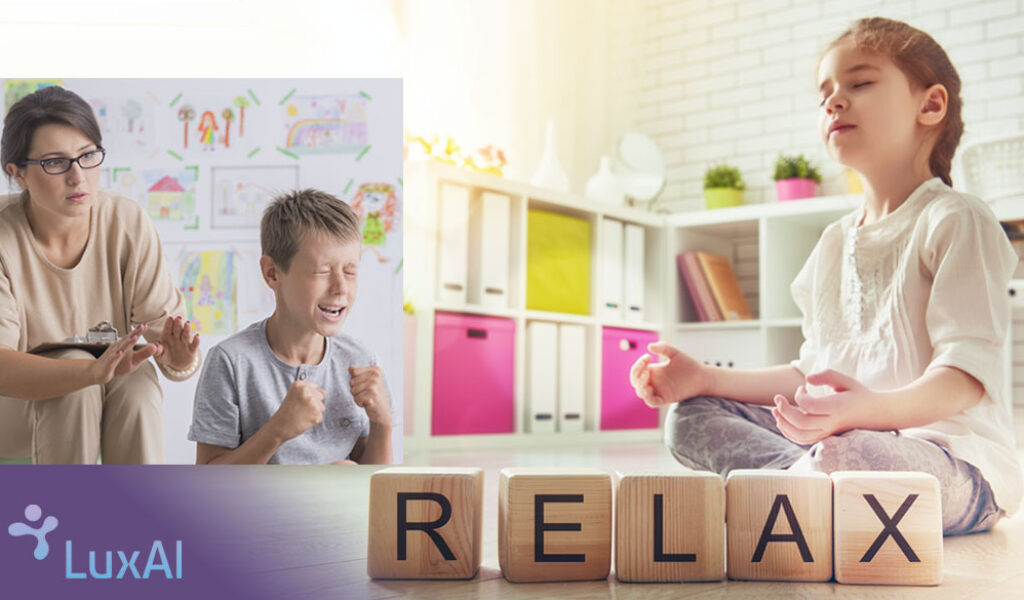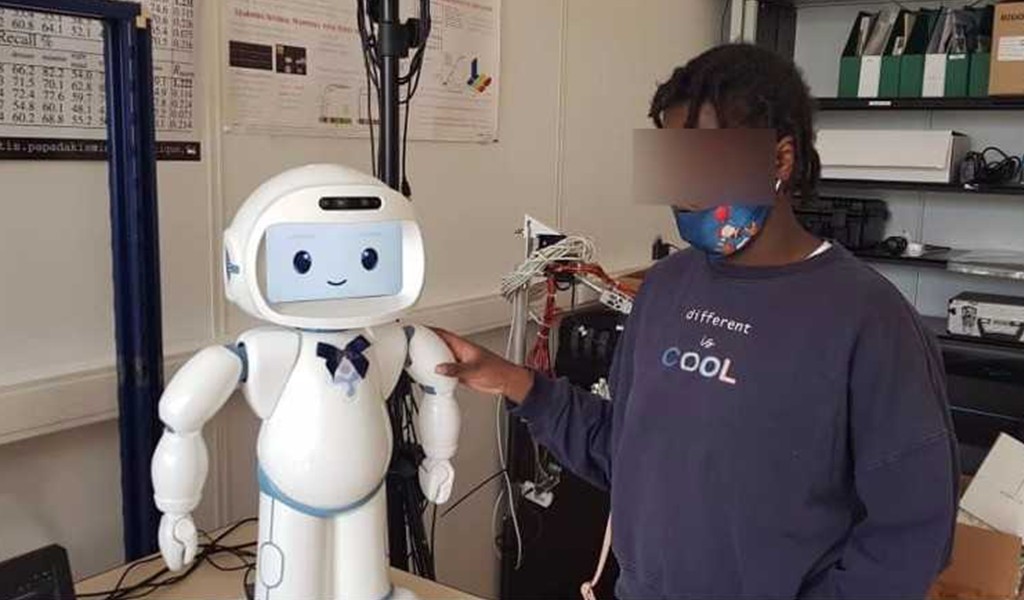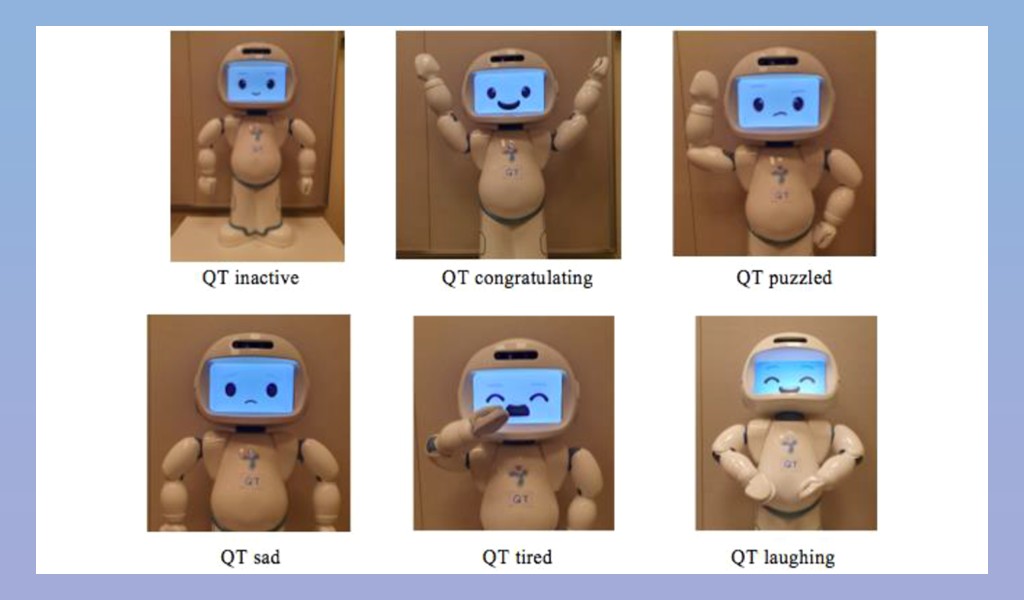How to Help Children With Autism Handle Their Emotions; Tips on Supporting Emotional Regulation
Many children with autism struggle with managing their feelings and they have difficulty to handle emotions in various situations. This can be seen in both high-functioning and low-functioning autistic children, and even adults. Practicing self-regulation skills and helping children to learn calm down strategies can directly contribute to their mental health and wellbeing. Learning about emotional regulation is also helping children with autism to have fewer emotional outbursts, less social anxiety and internalizing problems as well as less frequent aggressive behaviors or meltdowns.
In this blog post, we focus on some practical activities that can help parents and special needs educators to facilitate emotion regulation learning in autistic children at home or at school.
We will discuss:
What Is Emotion Regulation and Why Is It Important?
Emotion regulation is the ability to control and adapt behaviors when we are in a situation that is triggering a negative, intense feeling such as anxiety, frustration or anger. Helping children with autism to learn emotion regulation strategies can make a big impact on the wellbeing of children and their families. Learning about self-regulation can also contribute greatly in their social and academic success.
Before starting with the strategies to manage emotions, we need to make sure children have a good grasp on more basic emotional skills. That a child has fundamental emotional skills, means that they are for example able to recognize emotions in themselves and in others, they have a good understanding of what each emotion means and how they are triggered. In our previous blogs, you can find more about the activities for teaching emotion recognition and some steps for teaching emotion understanding along with how to help children to learn what situations can trigger various emotions.
Also, before teaching calm down strategies, we need to first help children to learn about positive and negative emotions. We also need to teach when emotions are felt too strongly and when they can make a negative impact on our behavior.
The skills and strategies that we discuss here are specifically useful for children with autism spectrum disorder (ASD). The activities and tips can also be used for any child who needs support in emotional regulation and learning how to handle emotions. Let’s go through 3 types of skills and strategies to help children handle their emotions.
1. Help children to learn about their emotion level and situations that trigger intense emotions
– Use emotion level charts
By using an emotion level chart similar to the one below, you can help children to categorize their emotions to various intensities. By categorising emotions, you help your child to better understand how intense they are feeling the emotions at each occasion. Categorization can also be used as a prompt for reminding kids to use various levels of calm down strategies.
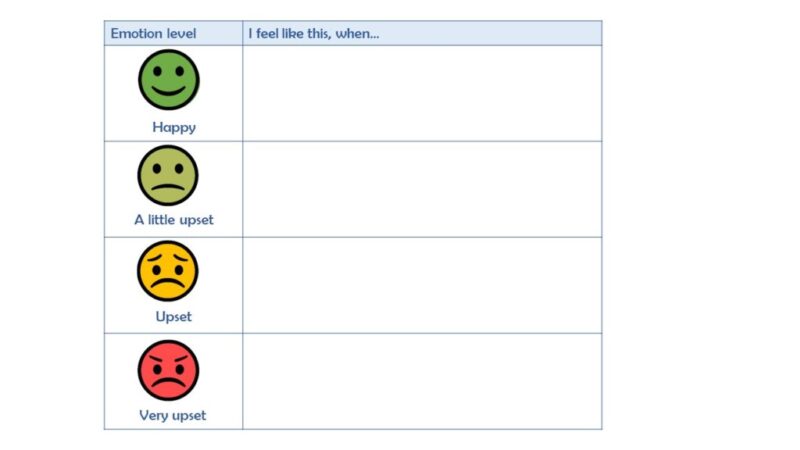
– Help the child to identify situations that may lead them to feel a certain level of emotions
For verbal children and children who are able to write, we can ask them to write down or tell us situations that may cause them to be angry or frustrated. For non-verbal children, we can use visuals and pictures to assign situations to triggering emotions. You can use something similar to the pictures below, for helping children to be aware of situations that will cause them to feel a certain way.
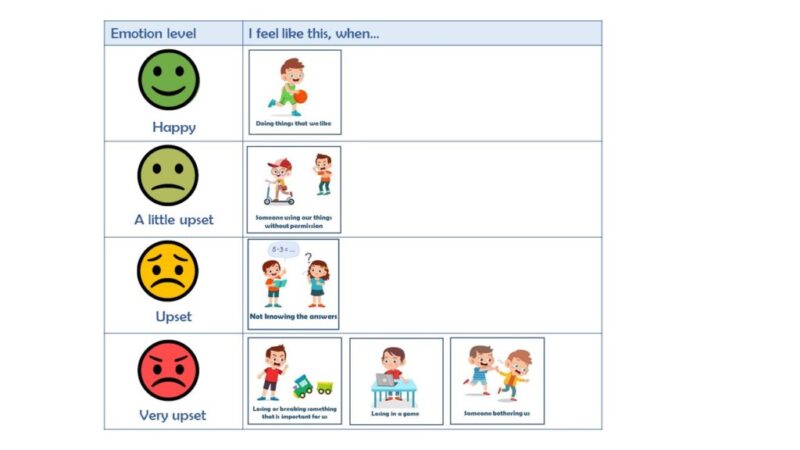
– Talk about emotions, situations and reactions:
Using the emotion level charts and identifying situations that trigger intense and negative emotions in your child can be the first step to prioritize activities that target emotion regulation. When you know the most frequent situation that can lead to a meltdown and emotional outburst, you can take your time and talk about those situations with your child and practice activities that can help them to calm down when they are feeling upset. Also, it can help you to reduce their exposure to potential situations causing emotional overstimulation.
2. Describe how children can react and respond to emotions
– Use social stories for expanding their understanding of the situation and calming down meaning
Social stories are great tools for helping children with autism to understand specific social situations. Using social stories, we can help autistic children to understand what it means to be calm and what calm down means. You can find an example of social story for explaining the meaning of calm down below:

– Use replacement behaviors for reacting to emotions
Focus on what to do rather than what not to do! Be specific about you want your child to do when they are angry or frustrated. If your child is able to follow directions, you can encourage them to use some positive behaviors instead of negative and unwanted ones.
– Use visual charts demonstrating good choices and bad choices
Use a chart with visuals showing positive reactions and negative reactions. Then try to help the child to understand what they should and should not do while feeling angry or frustrated:
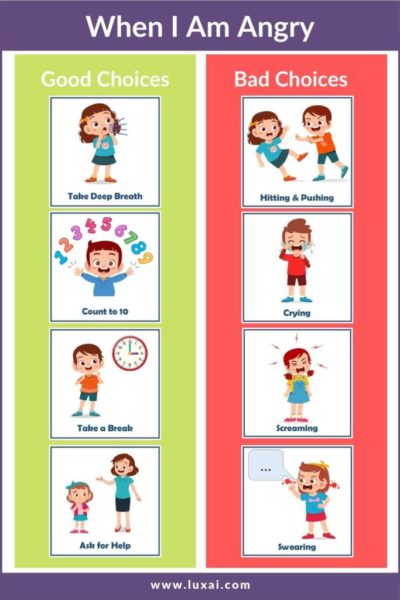
– Use social stories to help children to learn about the ways they can deal with emotions
Social stories are good educational tools for describing social situations and helping children to learn how to deal with these situations. Similar to many other social situations, such as how to greet and how to use polite words, we can benefit from social stories in developing awareness about emotions and how to deal with them. Also, we can use social stories to instruct kids step by step about what to do and what the outcome is of different behaviors.
You can find some examples of social stories below. The social stories are good for;
- teaching calm down strategies
- helping the child to handle frustration and anger
- choosing good behaviors while dealing with emotions.
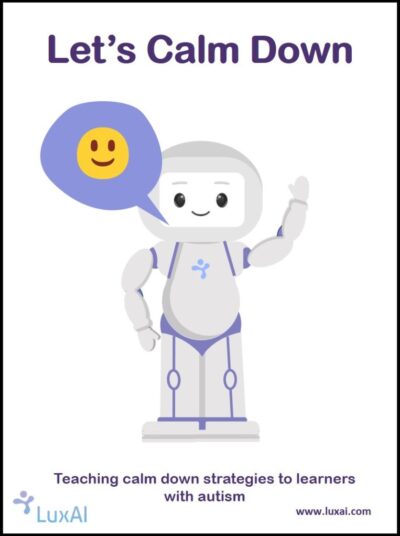

3. Practice Calm Down activities with them
There are a lot of activities that can help us to calm down when we are dealing with a negative or intense emotion. Each child may have their own preferences in choosing calm-down-activities. It is good to help your child to find out what works best for them. As the time passes, we can pay attention and find out what works better for our child, and we can try to encourage them to use these calm down methods.
Also, it is important to know about the child’s sensory problems and specific challenges in order to try to work on specific calm down activities that can be more effective for their unique situation.
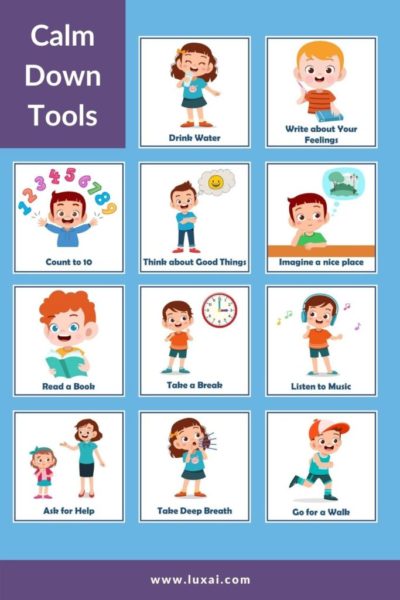
– Taking deep breaths:
Help your child to learn to take deep breaths when they start to feel upset. You can practice this skill with them when they are calm. When they are getting frustrated, you can prompt them to use deep breaths as a way to feel better. We can demonstrate the breathing to them and then ask them to copy us and practice breathing exercises along with us.
For this activity you can also benefit from some toys and tools. For example, you can use a pinwheel and ask children to take a deep breath and blow the pinwheel. This can help them to practice taking deep breath in a fun way. Also, you can ask them to use a bubble buttle and blow bubbles. This activity also requires the child to take a deep breath and blow the air out.
When they are blowing the bubbles, we can explain to them that the emotions are similar to bubbles. When we feel nervous or worried, we can imagine our negative thoughts like bubbles that we can pop.

Emotions are like bubbles, we can pop them

A pinwheel can help learn to take a deep breath
– Counting slowly
You can also use counting as a way to calm down. They can just count slowly, or they can count while taking deep breaths. You can also teach them to follow the lines of their fingers. Start from one side of the hand and trace around the fingers when counting.
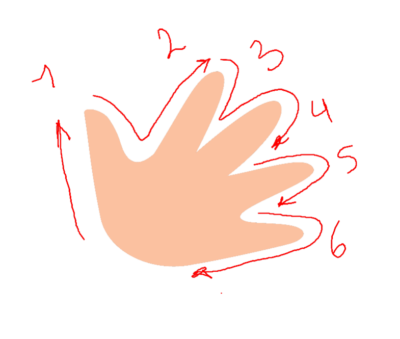
Count slowly with the help of a hand
Remember, we always practice these calm down activities when the child is calm and at ease. Teaching emotion regulation strategies should be done when the child is not nervous or upset.
– Thinking positive and re-directing the thoughts to something that feels good
In many situations the triggers for the emotions are our own thoughts. For example, when we feel nervous or anxious, we are thinking about the something that we don’t want to happen or we are scared of. In many cases anxiety comes from not knowing what is going to happen. In these situations, we can replace the negative thoughts by thoughts that are calming and positive. For example, we can think about a calm place that we like or we can think about a nice experience we had.
For helping autistic kids to re-direct their thoughts to something positive, we can do four things:
- First, we help them to understand that how they are feeling is because of their thoughts.
- We can then explain that the feelings will pass when they are not thinking about the negative situations.
- We can teach them that the thoughts are like bubbles and we can pop them.
- Also, we can prompt them to imagine a place that helps them to feel calm.
For children with autism, it is nice to have some sets of visuals showing the places they like or the objects that can help them feel safe, at ease and relaxed.
– Having a cool-down break
In many cases, especially when the reason behind feeling upset and frustrated is dealing with situations that cause overstimulation, like being in noisy places or being exposed to too much information, the best approach is to stay alone for a short while. This requires children to learn to talk about their feelings or to use visuals to show that they are not feeling good and be able to request a break or request to be removed from the environment that is causing sensory overload.
– Practice problem-solving skills
In many situations we get frustrated or nervous because we are dealing with a problem. This is the same for children with autism as well. Working on problem-solving skills can be a good start for reducing the meltdowns and emotional outbursts that come from dealing with a challenge.
To help children to learn problem solving, we can first help them to identify various categories of problems;
- small problems that they can deal with,
- medium problems that they can deal with but with some help from adults, and
- big problems that need an adult to solve the problem for that.
You can use some task cards with written or visual problems and ask the child to sort these problems to small, medium and big problems. Then you can practice responding to those problems and help the child to learn how to react if they encountered any of those problems.
By knowing about the natural, environmental problems that your child may have, you can include those situations in the activities. When the problems are part of the activities you can help your child to get more knowledgeable and confident to deal with them.
You can find an activity below that practices problem size and how to deal with problems:
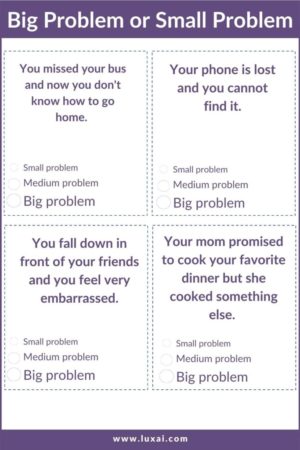
Further activities to practice self-regulation and calming down
When a coping skill is introduced to a child, parents can setup some activities that allow their children to practice calm down activities in a calm environment. This way the child can get prepared to react properly when they are in a situation that is triggering an intense feeling in them.
– Use role play to practice calm down activities
It is always nice to recreate some situations at home in a fun and engaging way and try to practice responding to those situations at home. By practicing responding properly when the child is calm and at ease, we can prepare them for the times that they need calm down strategies in real life. For example, you can use toys, dolls or puppets to recreate a social situation. You can then ask your child to help the doll who is feeling an emotion to choose the right reaction or calm down tool.
– Use books that include stories related to emotions and behaviors
Many children’s’ books are depicting a situation that has happened to a character. When reading a book, you can always try to ask questions from your child and get them to think about how the character feels. You can ask how they react, if the reaction was correct or wrong, and how they would suggest the character to react. This kind of activities will allow your child to think in advance about some situations and be more aware about the possible reactions if they encounter a similar situation.
– Use videos and animations for talking about the emotions and how to react to them
Similar to when reading books, you can benefit from scenarios in videos and animations to brainstorm about the emotions and reacting to them with your child.
– Use visual scenarios and scenario cards to talk about emotions and the ways we can react to them
There are many scenario cards available for practicing emotions, understanding their triggers and being able to brainstorm positive reactions to them. In the scenario cards, you can often find a situation that you can read to your child and ask them about the potential emotional outcome of the situation. You can then ask your child to explain about what they think is the best way to react to those situations. After this, you can ask your child to recommend what type of calm down tools can fit better to the situations.
You can find an example of the scenario cards below. Ask your child about the situations that may cause an emotion in them and ask them to identify which ways they can suggest for dealing with those. You can also create your own similar activity cards using the situations that your child may get triggered by and allow them to practice how they can deal with them in an indirect and gamified way.
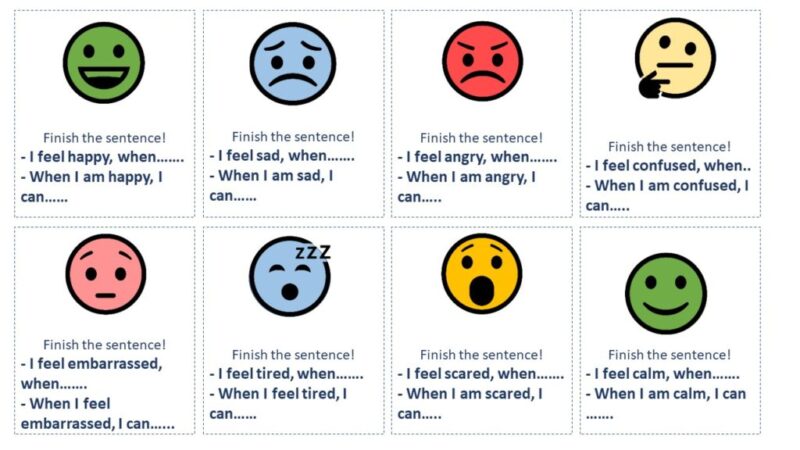
Activity cards can help to identify and regulate emotions
Every child may have their own preferences and over time we can identify what works better for each individual. When recommending calm down strategies, we can think about the triggers of emotions and the situations where each child may feel too intense emotions.
Let’s take two examples;
- A child is getting frustrated because of their sensitivity to sounds when they are in a noisy or crowded environment.
- Listening to a calm music with their noise canceling headphones can be a good calm down activity. This can reduce their overstimulation from the environment and can help them to stay calm at the same time.
- A child is getting frustrated, because they cannot find out what is going to happen during the day, or during the school day.
- We can teach them taking a break and asking questions as a way to reduce overstimulation.
- We can also help them by creating a visual schedule board that can help them to understand and prepare for their daily routine.
– Use scenario cards for practicing calm down activities and choosing the positive behavior in response to emotions
Scenario cards are teaching tools that are very helpful for teaching emotion recognition, identifying the emotional outcome of each situation and practicing proper and positive reactions to various scenarios and situations. Using scenario cards, you can read a situation for your child, and ask them how the person may feel in that situation and how your child would advise the person to behave in that situation.
– Debrief their daily or weekly reactions and create an emotion diary
It is often helpful to reflect back on what the child has done during the day or the week. It can help them to track themselves and be able to learn from the situations that they have dealt with. You can make a simple table, or a visual board, allowing them to record their emotions and reactions and audit their success in using calm down activities. This can provide you with an opportunity to reinforce and celebrate their success.
You can also use a similar approach to a token economy allowing them to collect points for their success and get a tangible reward at the end of each week or day. Just don’t forget to put goals that are achievable and gradually increase the difficulty so at all the times your child can feel successful and gets lots of positive feedback and encouragement.
Other useful tips for parents to help children with emotional regulation
– Build a calm-down corner for your child
In many cases the best way to calm down is to have a distance from an environment that is causing stress or frustration. It is good for kids to have a calm down area that allows them to rest and calm down without being disturbed. Calm down corner can be used both at school and at home and allows children to have a calm space for applying their calm down strategies. This dedicated area can be very helpful since a sense of routine and predictability can really help children to be more comfortable performing the tasks that are related to that environment. You can also use some visual prompts for calm-down activities in the calm-down corner, to remind the child about the activities they can do to feel better.
– Have a calm-down toolbox
Especially when you are out and you can foresee that you might go to environments that can trigger an intense emotion in your child, it is helpful to have some calm down tools with you. Often the tools in the calm down box are designed to help children with sensory overstimulation and distracting them from the situation that can trigger intense responses in them.
Normally what you include in your calm down toolbox depends on the sensitivities that your child has as well as their preferences. For example, if your child is sensitive to noise and sounds, having a headphone with noise cancellation or a music player can help them to cope better in a loud and noisy environment. If they tend to become aggressive toward themselves or others, having a chew toy or necklace can help them to release their stress.
In the toolbox, you can also include some tools that can help the child to practice calm down strategies such as deep breathing exercise using a pinwheel or a bubble buttle.
Below you can find a list of tools you can use to address various type of sensitivities and preferences.
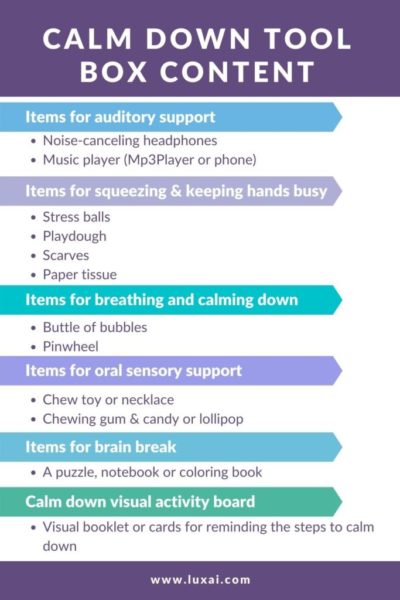
Stay calm
When the child is experiencing any intense emotions, often parents get impatient and irritated. However, if the child is sensing any anger or frustration from you, it can intensify their negative feelings. Sometimes, when a child is nervous, seeing their parent’s anxiety can escalate their emotional experience and make the situation more challenging. It is easier said than done, but parents need to practice calm down strategies themselves, so when they are dealing with their children, they are to remain calm.
Remember, responding to our child’s anger or frustration by getting angry or irritated will only make the situation worse. We can help them better when we are calm.
Stay consistent
Every time that your child is not able to stay calm or make a right choice in dealing with various situations, it is important that you stay consistent with your behavior. Many times, parents get frustrated and change their behavior every time their child is showing a behavior. It will only cause more confusion in the child and this will prevent them to get the right clues from us that can reinforce positive behaviors. It is very important for children to know that the result they achieve from a behavior is the same every time. You can simply repeat the instructions calmly. You can then tell them that you are going to help them to follow those instructions.
Collaborate with your child’s teachers and therapists to define a common goal and strategy
It is important to make sure the goals and strategies are used both at home and by parents and in school by teachers. By discussing the preferred calm down tools and strategies, you can agree on an approach that can be used consistently with your child. This way your child will receive similar recommendations and there is a lower chance for them to get confused about the appropriate responses to various situations. Also, by staying in touch with teachers, you will be able to identify situations that trigger anger or frustration at school and practice them at home.
How does QTrobot help children with emotion regulation?
With its simple, consistent and patient manners, QTrobot can be a helpful teacher for children with autism. One of the curricula belonging to the QTrobot package is the Emotional skills training curriculum. The curriculum organised to teach the child in a step-by-step manner, by clear teaching units and levels. With the help of different games and tasks, QTrobot helps the child amongst others to learn how to calm down and regulate emotions.
